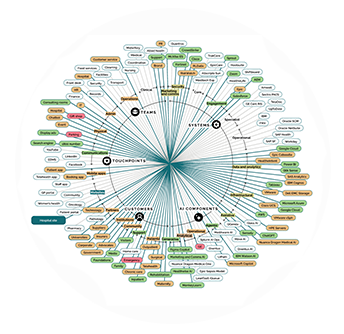SOCIUST SOLVES A PERSISTENT CHALLENGE
70-80% of transformations fail.
This is because changing any system impacts an ecosystem of connected experiences, touchpoints, teams and technology that interact in complex, interdependent ways that are not accounted for.
Leaders then struggle to align around a shared goal.
The solution lies in knowing the ecosystem
Show the ecosystem in real time
Diagnose it
Predict the impact of change
WHO IS IT FOR?
There are 2.3M eligible organisations in Australia and 327M globally, with the potential to recoup up to 50% of their $10M–$500M transformation budgets. There are particular customer groups who would benefit the most.
-
Sociust gives you a clear, organisation-wide view of how experiences, teams and systems connect. It reduces transformation risk, speeds up decision-making and enables you to spot misalignment, bottlenecks, and waste before execution even begins. You will also have access to advanced prediction and benchmarking tools to help with forecasting.
-
A combination of AI and standard automation means ecosystem mapping, building experiences and diagnosing issues takes a fraction of the time. You can set standards to ensure the quality of information and rediagnose the ecosystem from multiple perspectives.
-
There are multiple features that help PMs predict the real impact and scope of change, including complex prioritisation, clarifying the impact of change on every part of the ecosystem and providing a realistic view of scope. Most importantly it reduces siloed thinking and conflict by helping teams to understand how their work connects with others.





